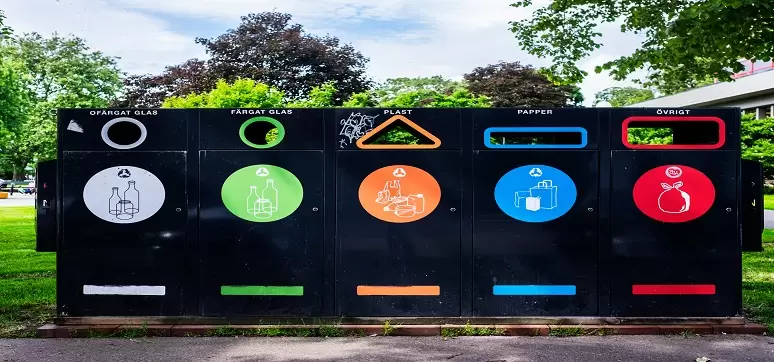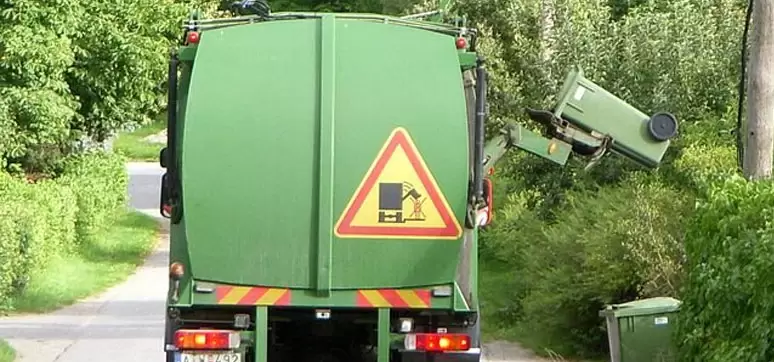Learn how Sweden turned around its waste into a useful energy source. Linkoping, Sweden- Linkoping, a city 125 miles south of Stockholm has a power plant run by Tekniska Verken, a municipal government company. It is one of Sweden`s 34 waste-to-energy power plants. Instead of buying coal or gas, this power plant buns trash or garbage. A giant mechanical claw reaches down and grabs 5 tons of trash. The claw drops down its ware down a 10 story shaft into a boiler that is hotter than 1500 degrees Fahrenheit. Hundreds of homes dump their trash which is transferred to a garbage electricity plant that has this huge cavernous room with the giant claw operated from a control room.
Post your Requirement
4 tons of garbage contains energy equal to 1 ton of oil, 1.1 tons of coal, or 5 tons of wood waste, according to this company. Less than 1% of household waste from Swedish houses reaches landfills.
49% of household waste is recycled. 50% of garbage is incinerated in power plants like this grand one. Heat is transformed into steam that spins turbines to generate electricity thus producing electricity from garbage
Though producing electricity from waste fulfills only a small amount of Sweden`s electric needs 83% comes from hydro and nuclear energy and wind generates 7%. But this garbage supplies much of the central heating in homes during the cold months for its 10 million residents. Energy from trash appeases the heat demand of 1.25 million apartments and electricity for 680,000 houses according to AV Fall Sverige.

In conventional power plants, 40% of energy is fully used but in these garbage electricity plants, 90% of the energy produced is utilized. This also gives hot water for bathrooms, kitchens, and central radiation heating.
Enquire Now for Modular Kitchen
This took several years of planning since the 1950s. Waste to energy generation plants does have its drawbacks, such as emissions like conventional power plants fueled by natural gas and coal.
However, methane which is generated from organic waste in landfills is reduced. This is extremely important because methane is about 72 times more potent as a greenhouse gas than Carbon dioxide.
From 2002-2005 Sweden banned organic and combined waste such as paper from landfills. In 1975 every person in Sweden recycled an average of 18 Kgs about 40 pounds of waste per person compared with 357 pounds in 2016.
430 pounds, in 1975 were sent to landfills. Now 6.6 pounds in 016 according to AVfall Sverige. Tekniska Verken estimates that trash burning operations last year avoided emissions equal to 467,000 tons of Co2.
Usage of trash to make electricity and for thermal heating reduces the burning of fossil fuels and acts as a big contributor to environmental preservation.
This is less carbon-intensive than coal and uses resources more efficiently than simply putting them in a landfill that would decompose and release greenhouse gases.
Tekniska Verken not only produces heat and electricity but also methane gas from 100,000 tonnes of food and organic waste every year. This runs 200 city buses in the country and fleets of garbage collection trucks and some taxis and private cars.
Garbage bags whiz on conveyor belts. Green plastic bags filled with organic waste are detected by Digital kind of sensors and are then diverted onto another conveyor belt to be trucked to a nearby gas plant. Plastic bags are ripped and the waste is filtered into a metal vat. The biogas digester creates methane which is then refined, CO2 is scrubbed off and distributed to Linkoping`s fuel stations. Though these power plants do cause some pollution.
Flu gases leave behind heavy metals and other toxins that are 4% of residue. This must be cleaned and treated and disposed of safely. Flu gases from Tekniska Verken are stored in an abandoned lime mine in Norway. Another residue called slag, made of emanates of glass, porcelain, gravel, and some others are used to cover landfills and also to build roads.
Sweden electricity generation
In continuation of its other green initiatives, Sweden is also increasing recycling. The country recycled 1.4 million tons of waste in 2011 and 1.6 million tons of waste in 2015.
Sweden also imports trash from Norway and Britain each year to fuel its powerplant. These countries pay Sweden to accept their trash.
Japan also incinerates its solid waste. China has doubled its waste work from 2011-15.
In developing, countries or warm tropical countries heat can be used to power paper mills, food processing plants, brick kilns, or soap factories nearby.
The waste collection needs organized infrastructure and logistics and more awareness should be created about waste disposal as this will have a long-term effect on the survival and sustenance of the human race.























Post A Comment